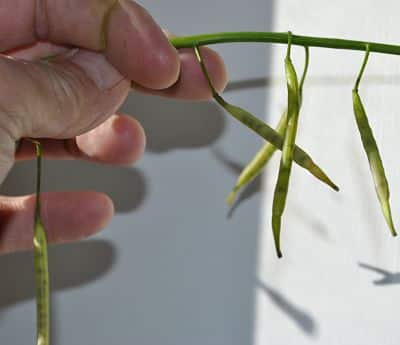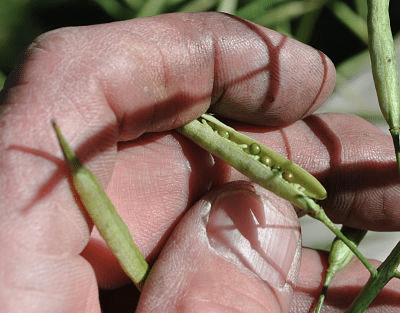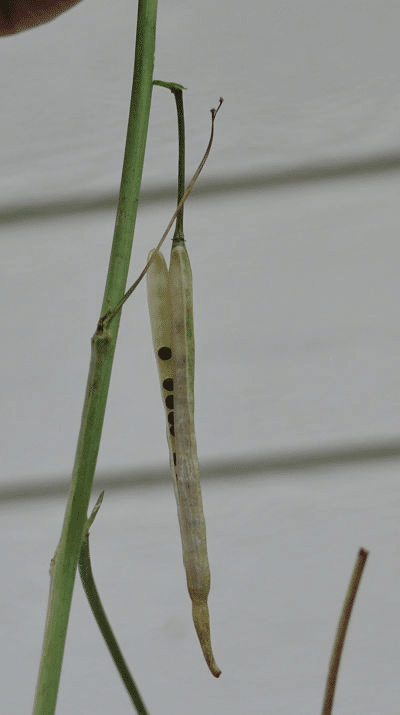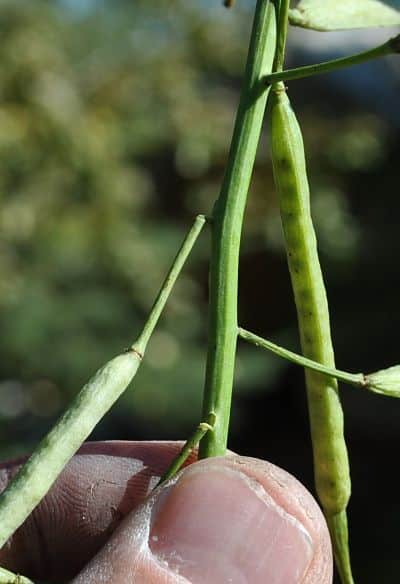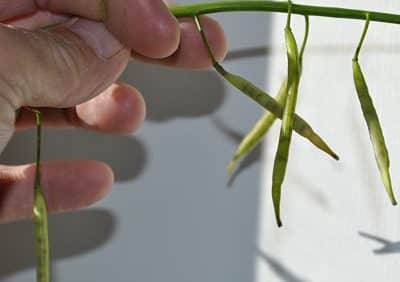Wait 4-6 hours after frost to start monitoring and then keep checking. If you check too early after a frost, the full extent of frost damage may not be evident. The crop may look undamaged that morning but by lunch time, wilting, desiccation and pod splitting may begin. If you scout early and then not again, you may underestimate the damage and miss a chance to swath now to save some of the yield.
If most or all seed is mature and you planned to swath the day after a frost anyway, then don’t bother waiting 4-6 hours. Just start swathing.
If you had planned to hold off on swathing, here are two scenarios that may influence your decision:
If you had a heavy frost… below -2 C: Go out early in the afternoon and assess the damage. Canola may wilt and desiccate quickly after a heavy frost, depending on factors such as crop stage, duration of frost and field topography. Check pods for a white, wilted appearance. Pod shatter and pod drop could begin within a day, especially with warm sunny afternoons. If pods are desiccating rapidly, swathing right away will preserve as much yield as possible.
Heavy frost is considered anything below -2 C. The photos below show canola pods that experienced a minus 7°C frost that morning.
If you had a light frost… above -2 C: Hold off swathing. Check this afternoon for wilting to make sure frost damage was not heavier than expected. You may see some speckling on the stem and pods, but this is of little concern as long as the plant is still alive. If no wilting, leave the crop standing and check daily.
What to look for during daily monitoring:
—If the majority of the seeds remain watery, delay swathing to allow for further seed maturity.
—If the pods are severely damaged and are beginning to desiccate, swath during periods of dew or high humidity to reduce the amount of pod shelling and pod drop.
Why wait? The amount of frost damage depends on various factors including crop stage, degree and length of frost, relative humidity, and presence of rain or dew. In many cases, a light frost will damage the outside of pods but seeds can continue to mature — increasing yield and quality — if the crop is left standing.
Frost and quality. A killing frost will reduce quality, but that can’t be helped — whether you swath today or wait. Immature seeds (moisture content higher than 20%) will be damaged. Seeds with less than 20% moisture will normally escape damage. Green seed is the major downgrade that results from frost.
